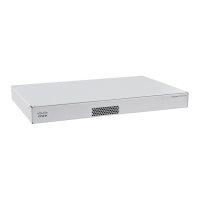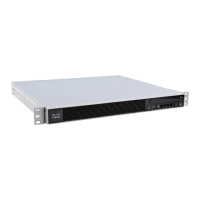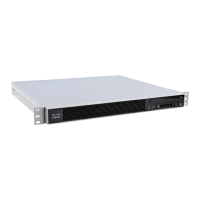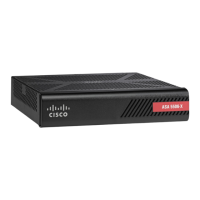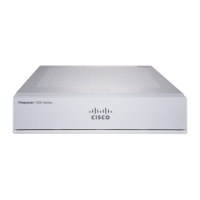1-13
Cisco ASA Series CLI Configuration Guide
Chapter 1 Configuring a Cluster of ASAs
Information About ASA Clustering
Load Balancing
The EtherChannel link is selected using a proprietary hash algorithm, based on source or destination IP
addresses and TCP and UDP port numbers.
Note On the ASA, do not change the load-balancing algorithm from the default (see the “Customizing the
EtherChannel” section on page 1-30). On the switch, we recommend that you use one of the following
algorithms: source-dest-ip or source-dest-ip-port (see the Nexus OS or IOS port-channel
load-balance command). Do not use a vlan keyword in the load-balance algorithm because it can cause
unevenly distributed traffic to the ASAs in a cluster.
The number of links in the EtherChannel affects load balancing. See the “Load Balancing” section on
page 1-7 for more information.
Symmetric load balancing is not always possible. If you configure NAT, then forward and return packets
will have different IP addresses and/or ports. Return traffic will be sent to a different unit based on the
hash, and the cluster will have to redirect most returning traffic to the correct unit. See the “NAT” section
on page 1-21 for more information.
EtherChannel Redundancy
The EtherChannel has built-in redundancy. It monitors the line protocol status of all links. If one link
fails, traffic is re-balanced between remaining links. If all links in the EtherChannel fail on a particular
unit, but other units are still active, then the unit is removed from the cluster.
Connecting to a VSS or vPC
You can include multiple interfaces per ASA in the Spanned EtherChannel. Multiple interfaces per ASA
are especially useful for connecting to both switches in a VSS or vPC. Keep in mind that an
EtherChannel can have only 8 active interfaces out of 16 maximum; the remaining 8 interfaces are on
standby in case of link failure. The following figure shows a 4-ASA cluster and an 8-ASA cluster, both
with a total of 16 links in the EtherChannel. The active links are shown as solid lines, while the inactive
links are dotted. cLACP load-balancing can automatically choose the best 8 links to be active in the
EtherChannel. As shown, cLACP helps achieve load balancing at the link level.

